1998 Jaguar XKR (Supercharged 4.0 V8) daily driver
Discussion
I have been meaning to create a Readers Cars thread for my Jaguar XKR for some time to document my ownership. However, the motivation to do so has really only come as a result of my fairly recent decision to reduce to one motorcar and make this my daily driver, which will mean it will need to do everything from the boring mid-winter commute to work, to extended summer jaunts to the Med and visits to ski resorts in the winter. And everything else. Hopefully, some regular care and appropriate expenditure will ensure it doesn’t rust away between trips.
Naturally, I could have instead sold the Jaguar and instead reduced my motorcar ownership to my nearly new Dacia Sandero that I’ve been using for my commute - itself a fantastic vehicle for what it is - but where’s the fun in that?
Introduction
I’ve actually owned the Jaguar for just over four years. It was acquired at the very end of 2020, right in the midst of the pandemic, between the various lockdowns we were subject to in England during that time. It was acquired as a usable ‘high days and holidays’ vehicle, and broadly speaking this is what it has been used for since. However, using it in this way does mean that several weeks can pass without taking it out, which I’ve always thought is a real shame. Motorcars like this are meant to be used, not sat tucked up somewhere waiting for the next sunny Sunday. It also helps that the values of these earlier XK8 and XKRs have been depressed in recent years with no sign of imminent increase, and therefore I don’t feel that subjecting a nice vehicle (especially one which is well known to be prone to natural weight saving) to the worst of the British weather is a financially foolish decision. Well, at least not too much: I’ll do my best to ignore the mpg in the teens!
My love of the Jaguar brand started when I was a boy. I have very fond memories of my maternal Grandad who owned a series of XJs, culminating in an XJ40 owned from new - I think - prior to his passing in 1998. A somewhat distant fellow to a boy of my age at the time, he very much fitted the mould of the stereotypical former WWII retired army major, who then spent his twilight days of retirement at the local golf club. I fondly remember him never without his wonderful smelling briar smoking pipe and only wish I had made more of an effort to connect with him when I had the opportunity to do so.
However, it wasn’t until my uncle (a much more recent Jaguar owner) purchased his second Jaguar, a 1997 XK8 Coupe, that I really fell in love with the brand. My uncle’s XK8 was finished in antigua blue - the same colour as my XKR - and as a 13 year old boy at the time, I remember being stopped in my tracks by how beautiful it looked. I immediately resolved to buy one “when I was older”, and this resolve had never really reduced. However, as with all these things, by the time the model had depreciated enough that I could afford to buy one, I knew I would struggle to cover the running costs. By the time I could afford to both buy and run one, most XKs for sale had fallen into a condition that could best be described as ‘somewhat past their best’ and with a number of potential significant headaches that can be presented to owners of these motorcars, I reluctantly stopped actively searching for one.
Fast forward a few more years and the father of a good friend of mine, who had owned (and continues to own) a number of classic and modern classic motorcars, offered me first refusal on his XKR that he’d owned for a few years. Having perused many emailed pictures, been assured that the usual ‘big’ jobs had been taken care of, and further reassured that many non-urgent jobs had been completed (at great expense) I arranged to view. After a short drive and an extended conversation over several cups of tea, I cheerfully agreed to become the latest custodian of this particular motorcar.
As I’ve now owned the Jaguar for just over four years, I intend to bring this thread up to the current day by adding a post for each year of ownership.
I will also keep a record of my expenditure, for those who are interested in such things.
So, to start: The first cost is the purchase price: £8,000.
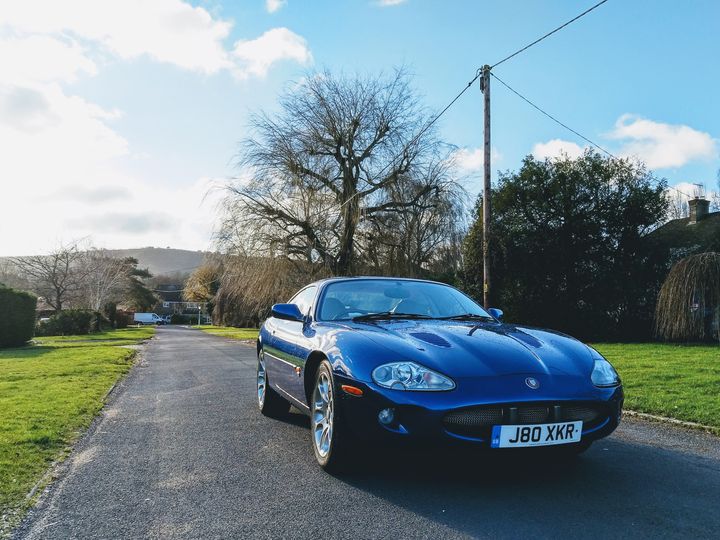
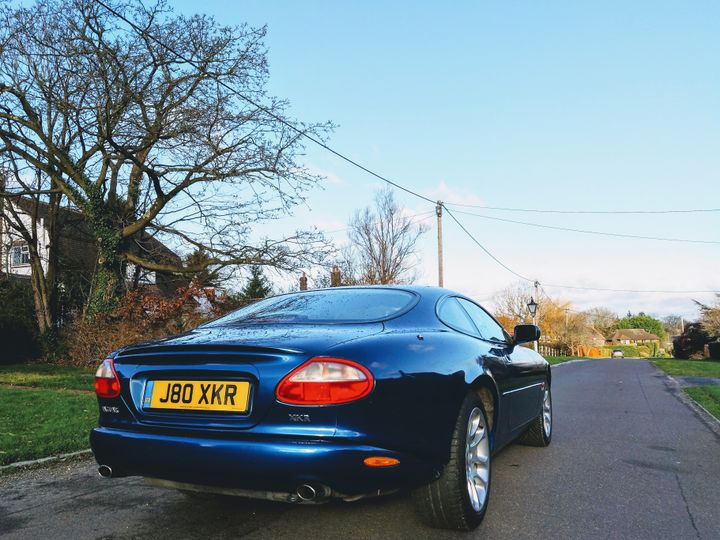
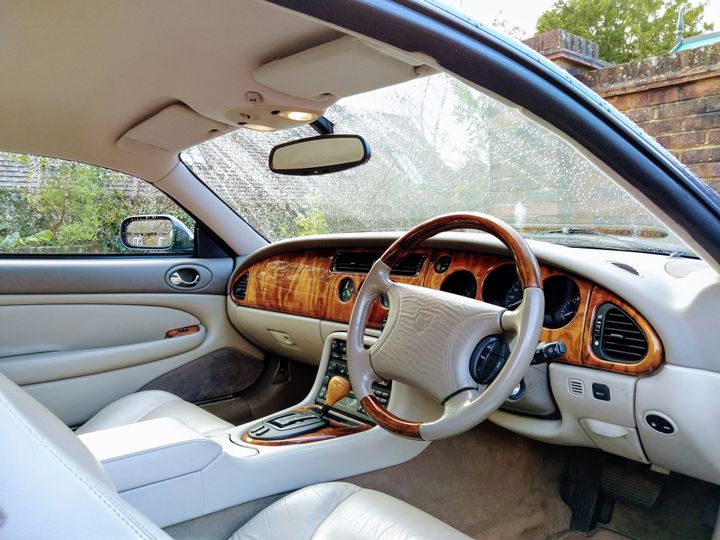
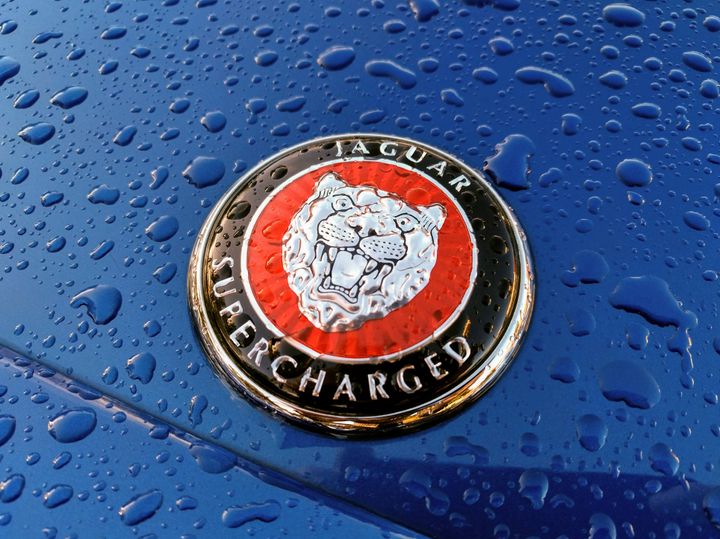
Taken: December 2020.
Naturally, I could have instead sold the Jaguar and instead reduced my motorcar ownership to my nearly new Dacia Sandero that I’ve been using for my commute - itself a fantastic vehicle for what it is - but where’s the fun in that?
Introduction
I’ve actually owned the Jaguar for just over four years. It was acquired at the very end of 2020, right in the midst of the pandemic, between the various lockdowns we were subject to in England during that time. It was acquired as a usable ‘high days and holidays’ vehicle, and broadly speaking this is what it has been used for since. However, using it in this way does mean that several weeks can pass without taking it out, which I’ve always thought is a real shame. Motorcars like this are meant to be used, not sat tucked up somewhere waiting for the next sunny Sunday. It also helps that the values of these earlier XK8 and XKRs have been depressed in recent years with no sign of imminent increase, and therefore I don’t feel that subjecting a nice vehicle (especially one which is well known to be prone to natural weight saving) to the worst of the British weather is a financially foolish decision. Well, at least not too much: I’ll do my best to ignore the mpg in the teens!
My love of the Jaguar brand started when I was a boy. I have very fond memories of my maternal Grandad who owned a series of XJs, culminating in an XJ40 owned from new - I think - prior to his passing in 1998. A somewhat distant fellow to a boy of my age at the time, he very much fitted the mould of the stereotypical former WWII retired army major, who then spent his twilight days of retirement at the local golf club. I fondly remember him never without his wonderful smelling briar smoking pipe and only wish I had made more of an effort to connect with him when I had the opportunity to do so.
However, it wasn’t until my uncle (a much more recent Jaguar owner) purchased his second Jaguar, a 1997 XK8 Coupe, that I really fell in love with the brand. My uncle’s XK8 was finished in antigua blue - the same colour as my XKR - and as a 13 year old boy at the time, I remember being stopped in my tracks by how beautiful it looked. I immediately resolved to buy one “when I was older”, and this resolve had never really reduced. However, as with all these things, by the time the model had depreciated enough that I could afford to buy one, I knew I would struggle to cover the running costs. By the time I could afford to both buy and run one, most XKs for sale had fallen into a condition that could best be described as ‘somewhat past their best’ and with a number of potential significant headaches that can be presented to owners of these motorcars, I reluctantly stopped actively searching for one.
Fast forward a few more years and the father of a good friend of mine, who had owned (and continues to own) a number of classic and modern classic motorcars, offered me first refusal on his XKR that he’d owned for a few years. Having perused many emailed pictures, been assured that the usual ‘big’ jobs had been taken care of, and further reassured that many non-urgent jobs had been completed (at great expense) I arranged to view. After a short drive and an extended conversation over several cups of tea, I cheerfully agreed to become the latest custodian of this particular motorcar.
As I’ve now owned the Jaguar for just over four years, I intend to bring this thread up to the current day by adding a post for each year of ownership.
I will also keep a record of my expenditure, for those who are interested in such things.
So, to start: The first cost is the purchase price: £8,000.
Taken: December 2020.
Year 1: December 2020 - December 2021
I was pleasantly surprised by the cost of insurance; £185.38 for the year and an additional £75.00 for a year's worth of European breakdown cover: bargain. Unfortunately, I had the Road Fund License to settle with the DVLA, at a cost of £270. Given the state of the roads in the UK, this is always a difficult but necessary expenditure. The swines.
The first year of ownership was a little disappointing. Not a failure of the Jaguar in any way, but simply the situation as a result of the various lockdowns (and threatened lockdowns) which made the well-planned jaunts to the south of France unviable. As a result, the Jaguar didn’t leave the confines of our shores during this year.
The Jaguar spent most of the year ensconced in its protective cover waiting for the weekend sunshine. As a result, there is not a huge amount to mention for this 12-month period!
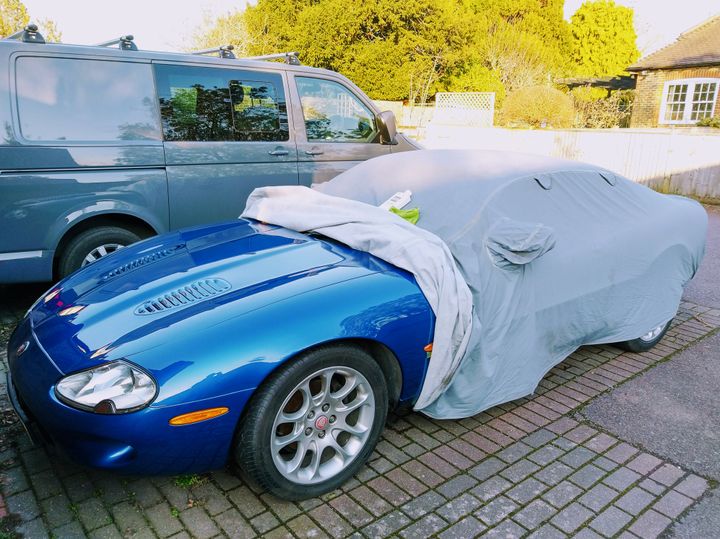
The first job was to fix the failure to deliver any heat to the cabin. Quite important, as the failure occured in February and the ambient temperature was below freezing! Curiously, the indicators [or fog lights, I can’t recall which] also failed to operate and - as I found out later - so to the heated seats. A search online revealed that this is a reasonably common failure of the back up batteries in the secondary alarm sensor. These corrode badly and as a result, cause a fuse to blow resulting in the failure of a number of electric items. I chose to disconnect the sounder, accessed through the front offside wheel well, which also had the added benefit of stopping the audible beep when I locked and unlocked the vehicle. The main alarm sounder uses the horns, so the alarm would continue to operate if needed.
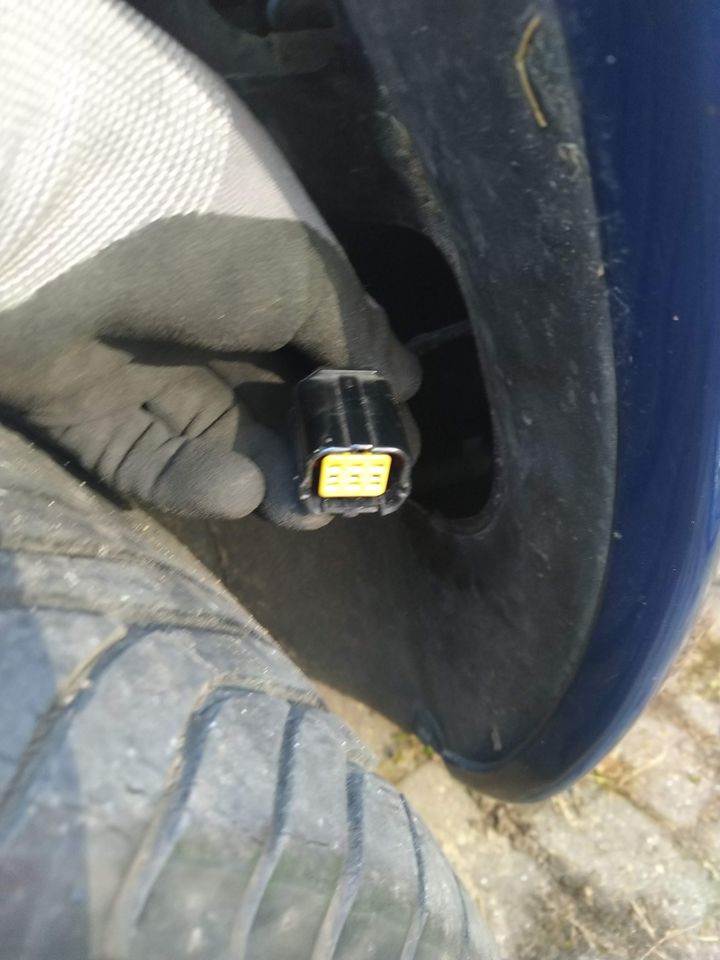
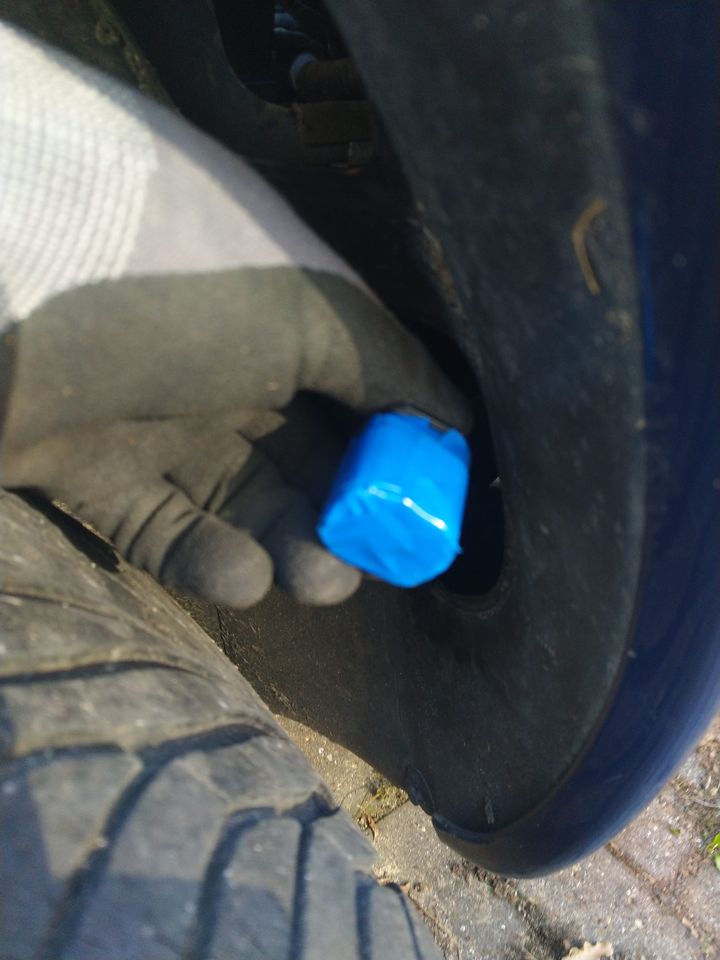
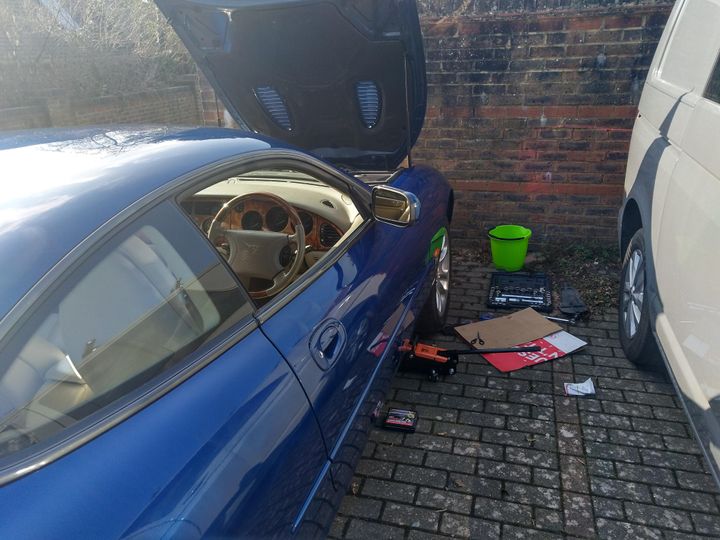
One issue I had noted throughout the year was the increasingly common intermittent illumination of the ABS and traction control lights, with an amber warning light and messages alerting me to the failure of these systems. The fault was either a wheel sensor, broken wiring or the ABS control unit itself, the latter a very common issue related to dry joints on the circuit board. I managed to figure out how to measure the resistance for each of the ABS sensors, and as a result managed to discount the first two possible failures, which meant that unfortunately the ABS unit had to be removed and sent away for repair. This was a job beyond my confidence level, so as result I entrusted the Jaguar to “The Man” who had looked after it for some years prior to my custodianship. With a small window of opportunity to take it abroad at the end of October, I also asked him to put on a new MOT, as it would be due prior to my return from France.
Oh dear:
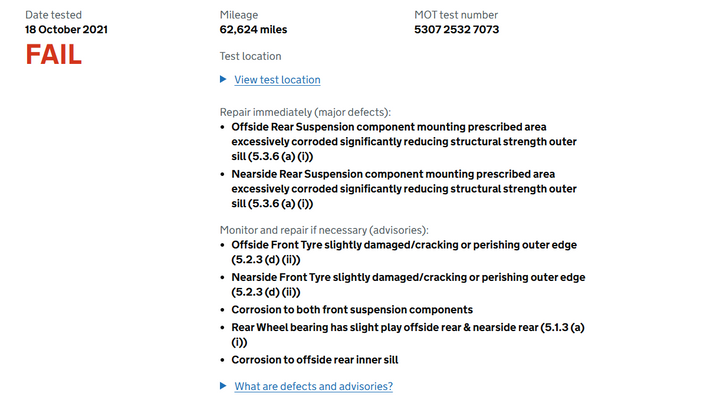
The front tyres were due to be replaced anyway. The Avon ZV5s that were on there were slightly cracking on the sidewall, which was slightly frustrating as the tyres themselves had plenty of tread left. The ZV5s were well known for this. I was assured by my specialist that the rear wheel bearing play was a non-issue, as this is the way the XK’s suspension is set up which, to the initiated, is often mistaken for a wheel bearing issue.
The suspension corrosion was surface rust only that would be dealt with at a later date, but more importantly was the need for some extensive work to the rear sills: a weak point on these motorcars. I toured a number of local body shops, and after some perseverance the body shop that gave me the most confidence in their ability happened to also be the cheapest: a rare alignment. However, they couldn’t fit me in until the New Year which somewhat scuppered my plans to take it to France. Bugger.
Reluctantly, the Jaguar was placed on SORN for the winter. The good news was that the ABS repair had been a success at a cost of £524.00, including my mechanic’s time.
Total miles in the year: 957 at a cost of £248.71 in fuel.
Total cost of ownership for the year, excluding purchase, £1.36 per mile.
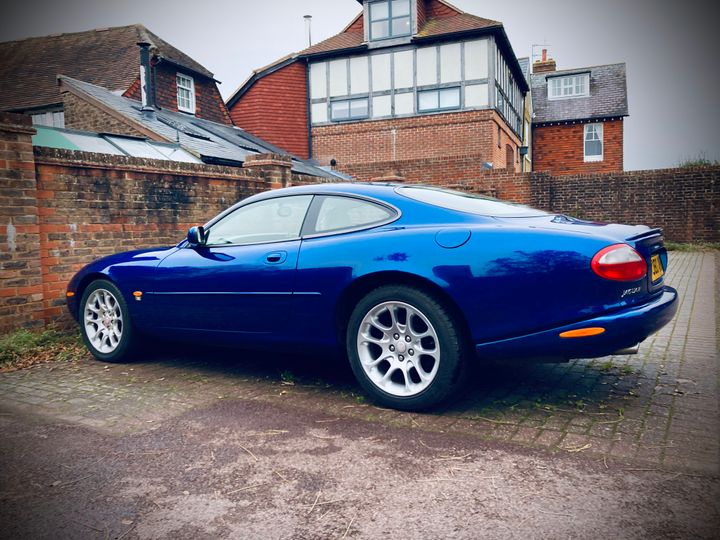
Resting whilst on SORN over the 2021 winter.
I was pleasantly surprised by the cost of insurance; £185.38 for the year and an additional £75.00 for a year's worth of European breakdown cover: bargain. Unfortunately, I had the Road Fund License to settle with the DVLA, at a cost of £270. Given the state of the roads in the UK, this is always a difficult but necessary expenditure. The swines.
The first year of ownership was a little disappointing. Not a failure of the Jaguar in any way, but simply the situation as a result of the various lockdowns (and threatened lockdowns) which made the well-planned jaunts to the south of France unviable. As a result, the Jaguar didn’t leave the confines of our shores during this year.
The Jaguar spent most of the year ensconced in its protective cover waiting for the weekend sunshine. As a result, there is not a huge amount to mention for this 12-month period!
The first job was to fix the failure to deliver any heat to the cabin. Quite important, as the failure occured in February and the ambient temperature was below freezing! Curiously, the indicators [or fog lights, I can’t recall which] also failed to operate and - as I found out later - so to the heated seats. A search online revealed that this is a reasonably common failure of the back up batteries in the secondary alarm sensor. These corrode badly and as a result, cause a fuse to blow resulting in the failure of a number of electric items. I chose to disconnect the sounder, accessed through the front offside wheel well, which also had the added benefit of stopping the audible beep when I locked and unlocked the vehicle. The main alarm sounder uses the horns, so the alarm would continue to operate if needed.
One issue I had noted throughout the year was the increasingly common intermittent illumination of the ABS and traction control lights, with an amber warning light and messages alerting me to the failure of these systems. The fault was either a wheel sensor, broken wiring or the ABS control unit itself, the latter a very common issue related to dry joints on the circuit board. I managed to figure out how to measure the resistance for each of the ABS sensors, and as a result managed to discount the first two possible failures, which meant that unfortunately the ABS unit had to be removed and sent away for repair. This was a job beyond my confidence level, so as result I entrusted the Jaguar to “The Man” who had looked after it for some years prior to my custodianship. With a small window of opportunity to take it abroad at the end of October, I also asked him to put on a new MOT, as it would be due prior to my return from France.
Oh dear:
The front tyres were due to be replaced anyway. The Avon ZV5s that were on there were slightly cracking on the sidewall, which was slightly frustrating as the tyres themselves had plenty of tread left. The ZV5s were well known for this. I was assured by my specialist that the rear wheel bearing play was a non-issue, as this is the way the XK’s suspension is set up which, to the initiated, is often mistaken for a wheel bearing issue.
The suspension corrosion was surface rust only that would be dealt with at a later date, but more importantly was the need for some extensive work to the rear sills: a weak point on these motorcars. I toured a number of local body shops, and after some perseverance the body shop that gave me the most confidence in their ability happened to also be the cheapest: a rare alignment. However, they couldn’t fit me in until the New Year which somewhat scuppered my plans to take it to France. Bugger.
Reluctantly, the Jaguar was placed on SORN for the winter. The good news was that the ABS repair had been a success at a cost of £524.00, including my mechanic’s time.
Total miles in the year: 957 at a cost of £248.71 in fuel.
Total cost of ownership for the year, excluding purchase, £1.36 per mile.
Resting whilst on SORN over the 2021 winter.
Year 2: December 2021 - December 2022
As the Jaguar was SORNed for the winter, I allowed the insurance to lapse until I needed to use it again in February 2022. Perhaps unwise, but I decided the risk was worthwhile. Unfortunately, the premium for the year ahead had increased by a whopping 26%, although it was still only £233.07 and the cheapest viable cover I could find. Still, not too bad for 370bhp and a driver aged under 40. Breakdown cover remained the same cost as the previous year at £75.00 - a bargain in my eyes.
I had booked the Jaguar into my preferred body shop who, coincidently, had just completed similar works on another XK of similar vintage so were able to show me the end result before they started work on mine. The work on my vehicle was completed in under a week and I have to say I was quite delighted with the results. Unprompted, they even took plenty of pictures for me for my own records. The total cost came to £966.00
Collecting from the body shop and I was reminded how wonderful Jaguar interiors are compared to more modern motorcars with screens everywhere
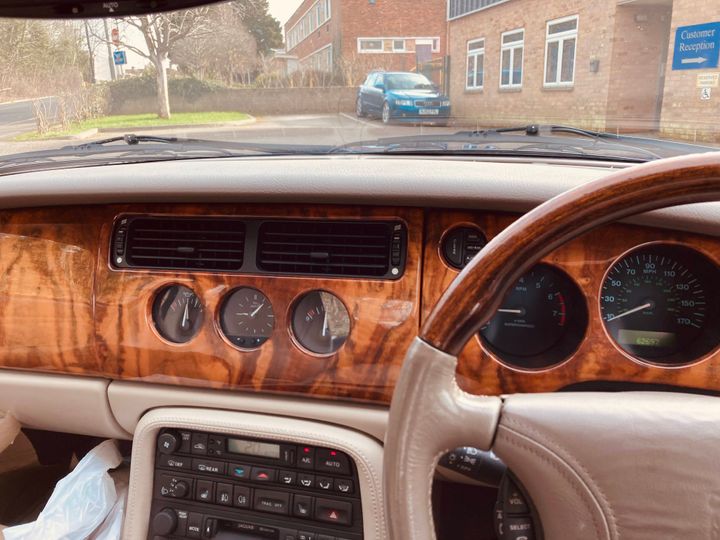
Apologies for the poor picture.
I booked in for the annual MOT and was pleased with the pass, noting the need to replace the front tyres (as mentioned previously) and get round to fixing the rusty suspension components. Cost of the MOT £47.00.
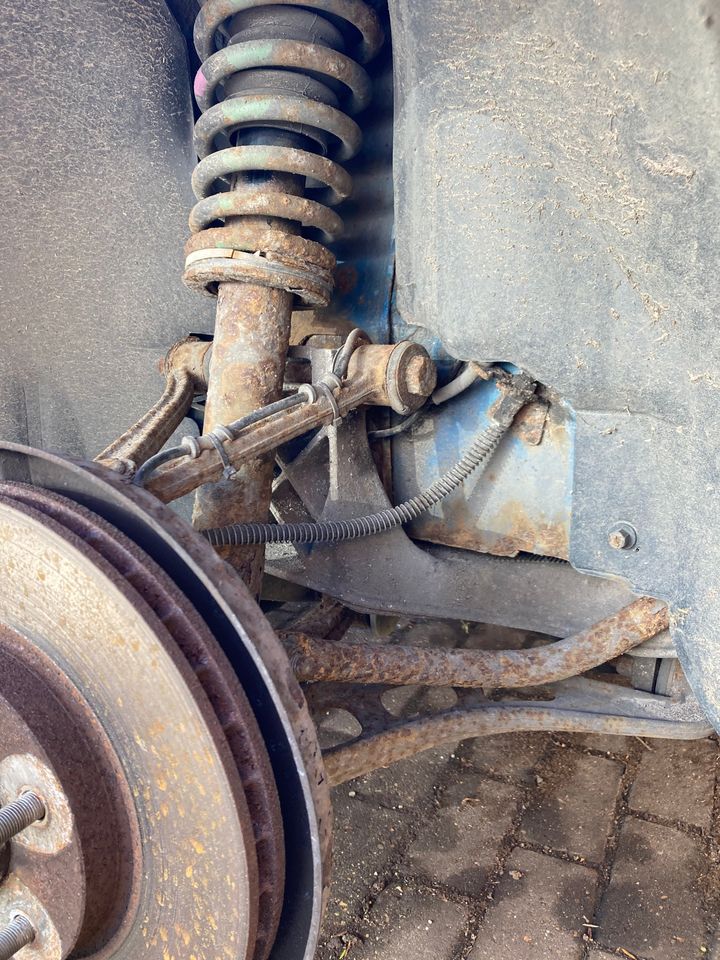
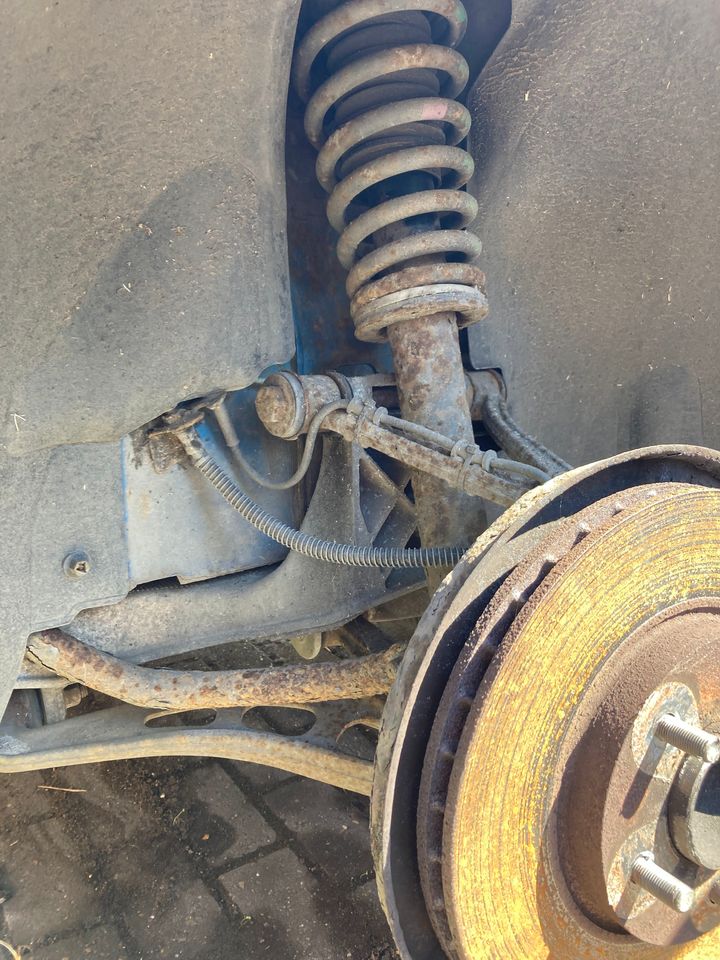
Twelve months road fund reluctantly purchased for £280.00. Roads still terrible.
Whilst at the mechanics whilst the ABS issue was being resolved, the nincompoops had managed to break the fuel cap striker, I suspect not realising that to release it, you needed to press a button inside the cabin. Still, a cheap self-repair at £15 or so. I also took the opportunity to order some new wheel centre caps, as the previous caps had faded significantly. I opted to buy some supposedly high quality copies from a Jaguar parts distributor (originals are eye watering for what they are), which ultimately was a waste of money but made the Jaguar look a little nicer for a few months. I also finally sorted the rear number plate, which was slightly loose and the cause of an annoying rattle.
After much consideration, I opted to replace the front tyres, which were Avon ZV5s, with the latest Avon ZV7s. The XK has staggered sizes, with the fronts being a 245/45/18 size and the rears 255 width. The rears were also ZV5s; I do like to have one brand of tyre on all four wheels. The ZV7s promised to be a cost-effective touring option; I don’t push vehicles to the limit so I do not need the latest and greatest tyre technology, although I steer well clear of ditchfinders. Total cost to the mobile tyre fitter was £210.88.
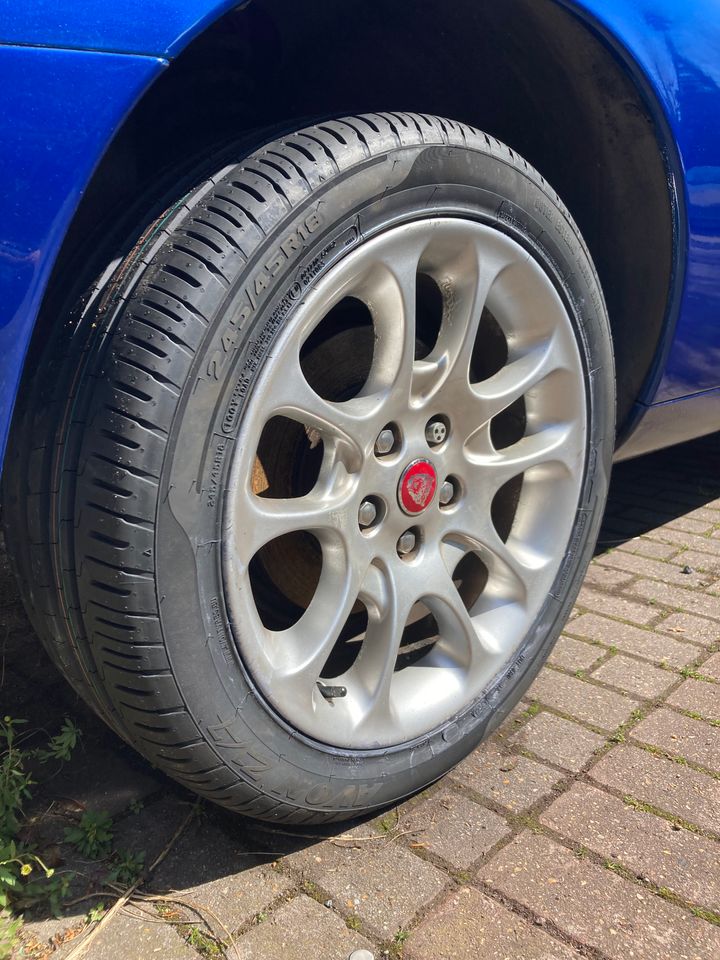
Some pictures taken outside of a local restored preservation railway station
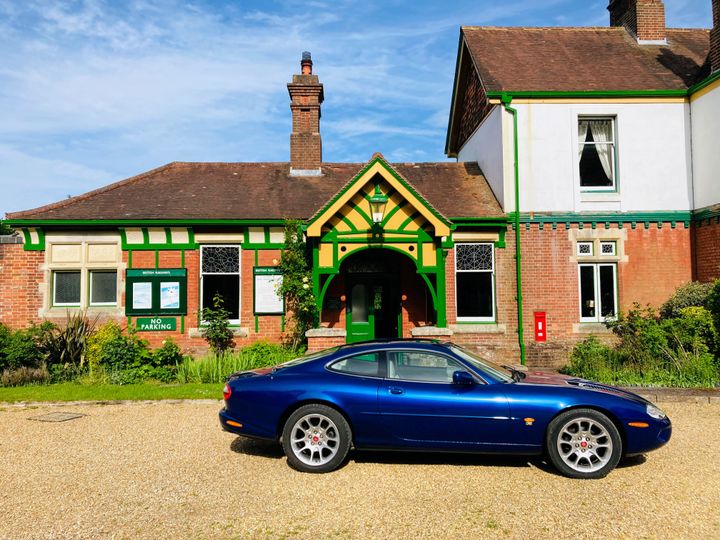
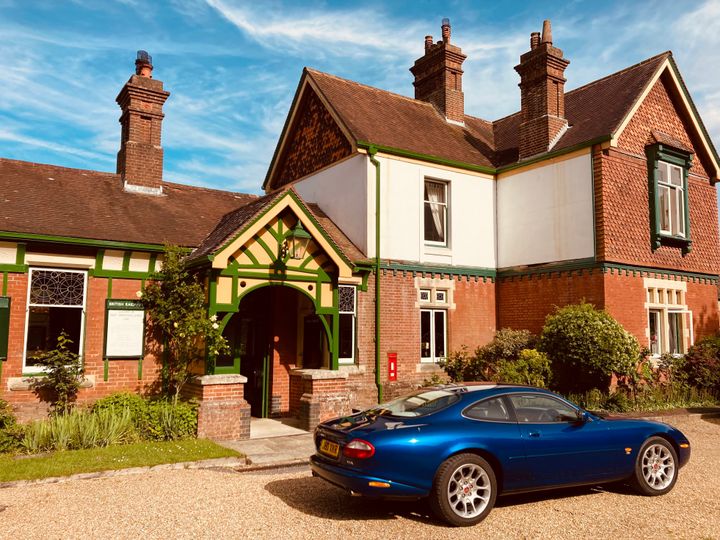
The Jaguar was now overdue for an engine service. I sought a recommendation from the local section of the Jaguar Enthusiasts Group and was firmly steered towards Jactechnic in Eastbourne. This had the added benefit of being able to enjoy a 1950s themed day by the seaside: shivering (in May) on the beach; fish and chips in the cafe and an ice cream to warm me up whilst waiting for the call to advise the service had been completed.
Very competent service and a not-at-all wallet busting cost of £265.69. Would use them again.
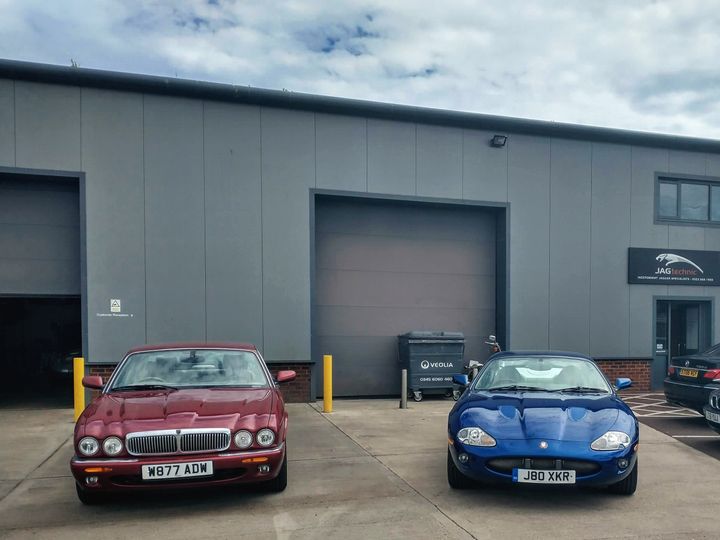
The use of the Jaguar in the early summer months generally revolved around sunny Sunday outings to local National Trust places. I am always amazed at how small the XK looks compared to modern, average sized motors:
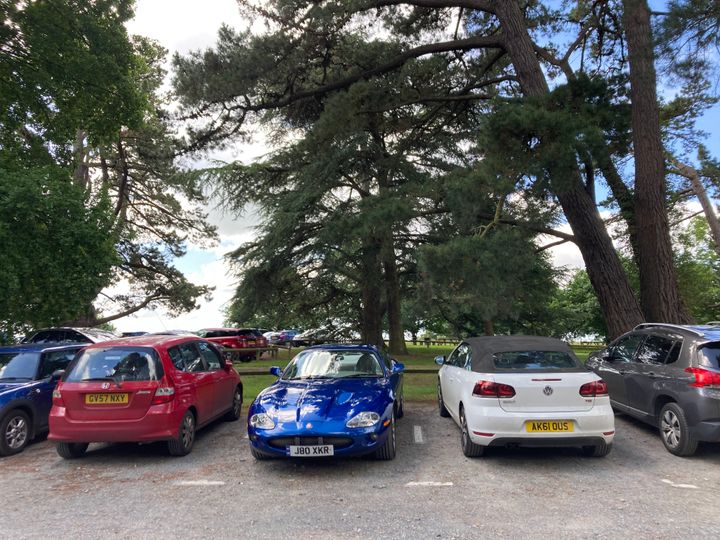
As the summer progressed, it became time to stretch the legs of the Jaguar by taking it on its first (with me) adventure abroad. This time, 1,200 miles to and from the South West of France, to a wonderful house we found online and had visited in the summer of 2020. The Jaguar proved to be, as expected, a superb long-distance cruiser. Extremely comfortable and a very relaxing driving experience. Even the fuel consumption wasn’t all that bad, at an average of 27 mpg for the trip. We chose to drive the route without recourse to the new-fangled Autoroute. This added many hours to the journey, but allowed us to see much more of France, a country we adore, than if we had stuck to the motorways.
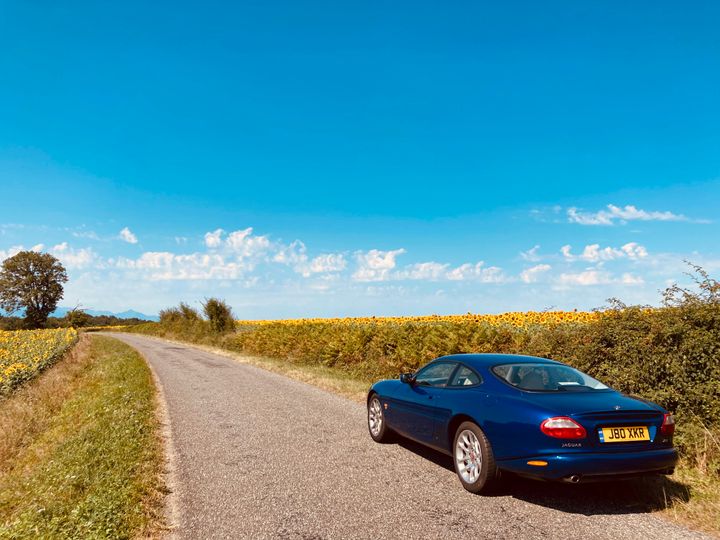
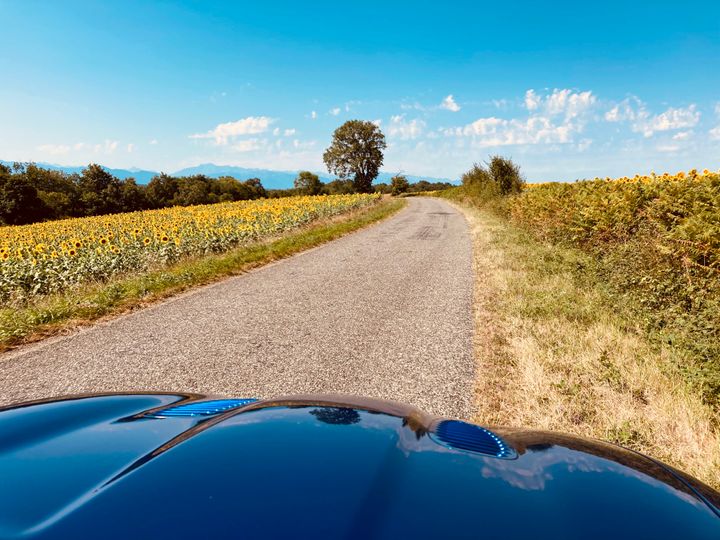
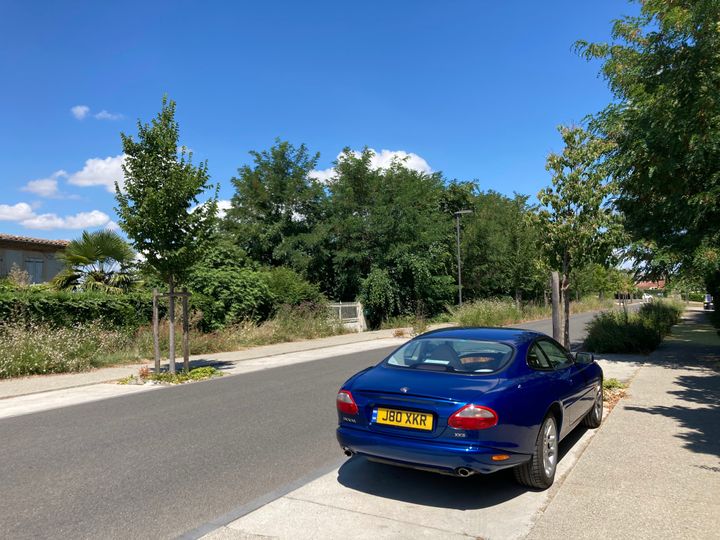
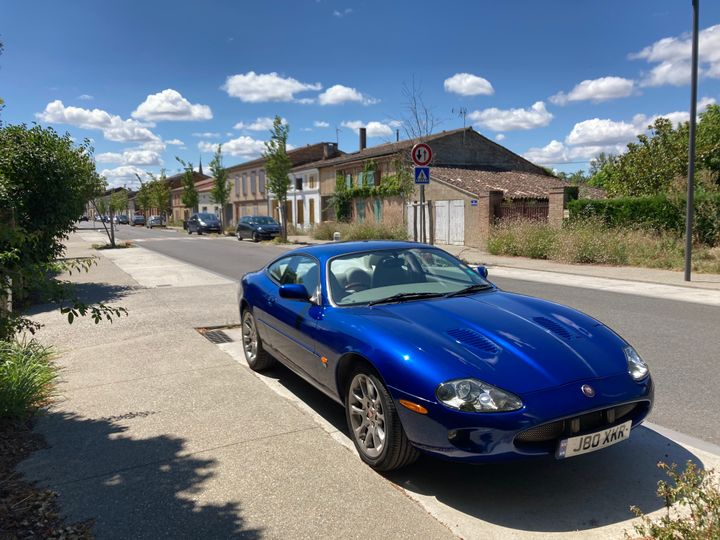
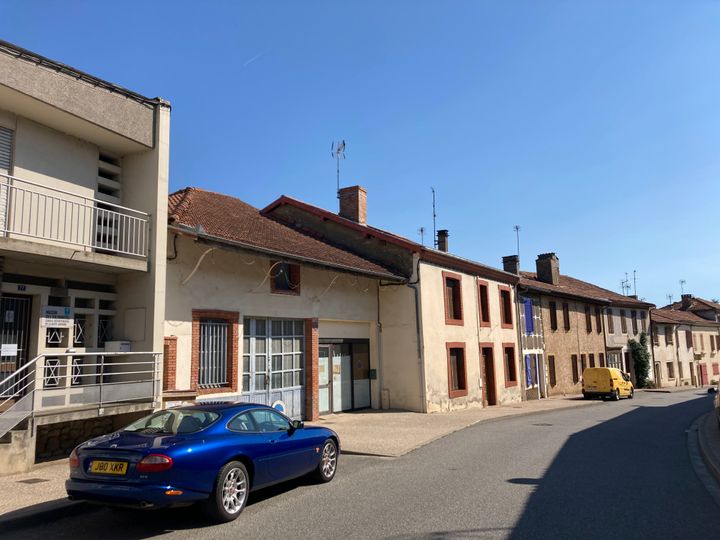
The end of the year was broadly uneventful, save for a knock on the door one evening by my lovely but somewhat sheepish neighbour, who admitted she had managed to clip her Mercedes on the rear offside of the Jaguar. Her Mercedes came considerably worse off! We were both happy to arrange the repair privately, so back to the body shop I went. Coincidently, I noticed on the drive to the body shop that the interior dash lighting and revs were fluctuating. This turned out to be a failed alternator regulator, necessitating a replacement alternator. However, as it was now approaching Christmas I decided to lay the Jaguar up for the winter once the body repairs had been completed and deal with that problem in the New Year!
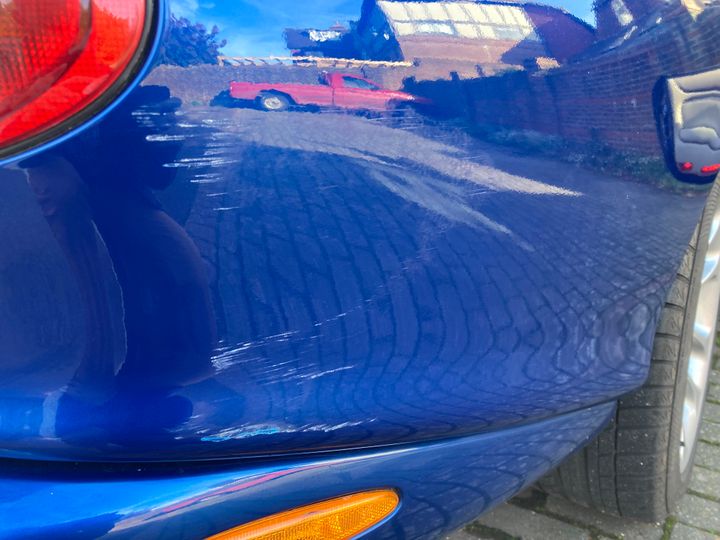
Oops!
Total miles in the year: 1,988 at a cost of £651.09 in fuel.
Total cost of ownership for the year, excluding purchase, £1.32 per mile.
As the Jaguar was SORNed for the winter, I allowed the insurance to lapse until I needed to use it again in February 2022. Perhaps unwise, but I decided the risk was worthwhile. Unfortunately, the premium for the year ahead had increased by a whopping 26%, although it was still only £233.07 and the cheapest viable cover I could find. Still, not too bad for 370bhp and a driver aged under 40. Breakdown cover remained the same cost as the previous year at £75.00 - a bargain in my eyes.
I had booked the Jaguar into my preferred body shop who, coincidently, had just completed similar works on another XK of similar vintage so were able to show me the end result before they started work on mine. The work on my vehicle was completed in under a week and I have to say I was quite delighted with the results. Unprompted, they even took plenty of pictures for me for my own records. The total cost came to £966.00
Collecting from the body shop and I was reminded how wonderful Jaguar interiors are compared to more modern motorcars with screens everywhere
Apologies for the poor picture.
I booked in for the annual MOT and was pleased with the pass, noting the need to replace the front tyres (as mentioned previously) and get round to fixing the rusty suspension components. Cost of the MOT £47.00.
Twelve months road fund reluctantly purchased for £280.00. Roads still terrible.
Whilst at the mechanics whilst the ABS issue was being resolved, the nincompoops had managed to break the fuel cap striker, I suspect not realising that to release it, you needed to press a button inside the cabin. Still, a cheap self-repair at £15 or so. I also took the opportunity to order some new wheel centre caps, as the previous caps had faded significantly. I opted to buy some supposedly high quality copies from a Jaguar parts distributor (originals are eye watering for what they are), which ultimately was a waste of money but made the Jaguar look a little nicer for a few months. I also finally sorted the rear number plate, which was slightly loose and the cause of an annoying rattle.
After much consideration, I opted to replace the front tyres, which were Avon ZV5s, with the latest Avon ZV7s. The XK has staggered sizes, with the fronts being a 245/45/18 size and the rears 255 width. The rears were also ZV5s; I do like to have one brand of tyre on all four wheels. The ZV7s promised to be a cost-effective touring option; I don’t push vehicles to the limit so I do not need the latest and greatest tyre technology, although I steer well clear of ditchfinders. Total cost to the mobile tyre fitter was £210.88.
Some pictures taken outside of a local restored preservation railway station
The Jaguar was now overdue for an engine service. I sought a recommendation from the local section of the Jaguar Enthusiasts Group and was firmly steered towards Jactechnic in Eastbourne. This had the added benefit of being able to enjoy a 1950s themed day by the seaside: shivering (in May) on the beach; fish and chips in the cafe and an ice cream to warm me up whilst waiting for the call to advise the service had been completed.
Very competent service and a not-at-all wallet busting cost of £265.69. Would use them again.
The use of the Jaguar in the early summer months generally revolved around sunny Sunday outings to local National Trust places. I am always amazed at how small the XK looks compared to modern, average sized motors:
As the summer progressed, it became time to stretch the legs of the Jaguar by taking it on its first (with me) adventure abroad. This time, 1,200 miles to and from the South West of France, to a wonderful house we found online and had visited in the summer of 2020. The Jaguar proved to be, as expected, a superb long-distance cruiser. Extremely comfortable and a very relaxing driving experience. Even the fuel consumption wasn’t all that bad, at an average of 27 mpg for the trip. We chose to drive the route without recourse to the new-fangled Autoroute. This added many hours to the journey, but allowed us to see much more of France, a country we adore, than if we had stuck to the motorways.
The end of the year was broadly uneventful, save for a knock on the door one evening by my lovely but somewhat sheepish neighbour, who admitted she had managed to clip her Mercedes on the rear offside of the Jaguar. Her Mercedes came considerably worse off! We were both happy to arrange the repair privately, so back to the body shop I went. Coincidently, I noticed on the drive to the body shop that the interior dash lighting and revs were fluctuating. This turned out to be a failed alternator regulator, necessitating a replacement alternator. However, as it was now approaching Christmas I decided to lay the Jaguar up for the winter once the body repairs had been completed and deal with that problem in the New Year!
Oops!
Total miles in the year: 1,988 at a cost of £651.09 in fuel.
Total cost of ownership for the year, excluding purchase, £1.32 per mile.
That's a lovely looking car, they're getting rare in that condition as all the snotters fall into £2k eBay territory and die out. I've seen them with the most horrific corrosion underneath and to the rear quarters, by the time it's got a real hold on the car it's pretty much scrap.
I'm sure you enjoy every mile in it.
I'm sure you enjoy every mile in it.
Edited by GeniusOfLove on Monday 10th February 17:43
Thanks for the comments chaps; I'll aim to add at least one of the next two years tomorrow if I can. I'd like to bring the story up to the present day as quickly as I can.
I should add that the car is far from perfect, although in much better condition than the majority of these I see. I've some rust to the front sills that need to be attended to rather soon, and a few minor blebs elsewhere that I'll get a quote for at the same time. I'm intending on having a professional rust treatment done this year - the car is remarkably rust free underneath and I'd quite like to keep it that way!
I've pressed the car into daily service in the last two weeks, and touch wood it's been fine. I am creating an ever growing to do list that I will need to work through; I'm quite anally retentive car owner and like things just so!
More anon.
I should add that the car is far from perfect, although in much better condition than the majority of these I see. I've some rust to the front sills that need to be attended to rather soon, and a few minor blebs elsewhere that I'll get a quote for at the same time. I'm intending on having a professional rust treatment done this year - the car is remarkably rust free underneath and I'd quite like to keep it that way!
I've pressed the car into daily service in the last two weeks, and touch wood it's been fine. I am creating an ever growing to do list that I will need to work through; I'm quite anally retentive car owner and like things just so!
More anon.
Tommie38 said:
That looks great.
How do they drive? Was the reception from the motoring press generally good?
I’m imagining cruiser with plenty of power in reserve.
Contemporary reviews seemed quite positive indeed. Jeremy Clarkson - like him or loath him - seemed to be a big fan, and of course famously owned an XJR which he adored and therefore he was very familiar with these cars. How do they drive? Was the reception from the motoring press generally good?
I’m imagining cruiser with plenty of power in reserve.
Here's a YouTube clip from 1996:
They are definitely GT cars, rather than sports cars. Do not expect something highly nimble with lots of feel. However, they are very comfortable and relaxing places to be, and in either supercharged or non-supercharged form cover ground at great pace if needed. Acceleration, especially in supercharged form, can only be described as very linear - they pick up the pace very well and just don't let up all the way to the limiter. Mashing the pedal at 100 still creates the same pushed-back-in-your-seat feeling as if you did the same at 50.
Forgetting the inevitable fuel costs, they are these days an absolute perfect way to cross a continent if you're on a budget.
I worked for Jaguar when this model was launched and recall driving the XK8 and XKR back to back at a dealer event at Tatton Park around March 1998. They were lovely cars and an easy sell with limited stock availability. The R, as you say, is noticeably more urgent than the standard model with the extra power available.
I very nearly didn't get to take part as Jaguar would only permit drivers 25 and over to use their cars and i was only 24 years and 11 months old. The son of the owner of our dealership actually signed a disclaimer to say he would cover any claim arising from my using their vehicles which i was quite taken aback by. I didn't go too mad as i wanted to keep my job!
I very nearly didn't get to take part as Jaguar would only permit drivers 25 and over to use their cars and i was only 24 years and 11 months old. The son of the owner of our dealership actually signed a disclaimer to say he would cover any claim arising from my using their vehicles which i was quite taken aback by. I didn't go too mad as i wanted to keep my job!
Wonderful cars, they continue to age well.
I bought a darker blue cheap XK8 when I was 27 and performed some of the maintenance you have listed. Everything worked, and I covered many miles in almost perfect GT ease.
Mine had leakey valve cover seals, some rust in the footwell under the carpet anf a droopy headliner to deal with.
Oh, and you also have to listen to people go on about Nikasil liners everytime you mention ownership, which can become, ahem, a 'bore'.
I bought a darker blue cheap XK8 when I was 27 and performed some of the maintenance you have listed. Everything worked, and I covered many miles in almost perfect GT ease.
Mine had leakey valve cover seals, some rust in the footwell under the carpet anf a droopy headliner to deal with.
Oh, and you also have to listen to people go on about Nikasil liners everytime you mention ownership, which can become, ahem, a 'bore'.
Year 3: December 2022 - December 2023
A somewhat quiet start to the year, as the Jaguar’s alternator regulator had failed at the end of November. This had the result of sending quite spiky voltage throughout the car and I was advised not to run the car at all, as I would run the very high risk of damaging the vehicle's electronics. Given these cars are known to be quite sensitive to voltage, I took the advice very seriously! So, once again, the XKR was laid up over the winter period pending work to be carried out in the spring.
This year I didn’t allow the insurance to lapse despite the lack of use, but I did move away from Footman James (who proposed an unsubstantiated increase in premium that was a little shocking) and instead insured the car with Peter James. It would seem Mr James has a monopoly on classic car insurance. Total premium in the year was £187.04 - a reduction on the last year and broadly what I paid two years previously. Getting old(er) has its benefits, I suppose. The provided European breakdown cover coming in yet again at £75.00 for an annual policy.
Not wanting to drive the car any distance with a failed alternator, I booked the car into my local mechanic. It’s the sort of non-specialist place that caters for all old and new, but I knew a few neighbours who used them for work on cars far more valuable and exotic than the XKR, and at only 2 miles from home it was no problem to drive there with the alternator disconnected via the fuse. I had, over the Christmas period, searched high and low for a Denso alternator - the recommended brand - and managed to find a new one for sale for £167.17 from a Jaguar parts distributor online. Other prices ranged wildly with the highest quote that received nearly £1,000! It certainly pays to shop around.
Total cost to fit the alternator was £365.10 making the job £532.37 in total.
A new MOT was acquired (£47.00) and this time the only advisories related to the corroded suspension components. A job for the summer.
Even whilst on holiday, I couldn’t help but to stop and look at some (much nicer) Jaguars that were on show. These were in a small display I unexpectedly came across when visiting a WWII aviation museum in California. I had an excellent chat with the curator who showed me the cars in quite some detail and certainly knew his stuff about Jaag-waars. Some other interesting cars on display too.
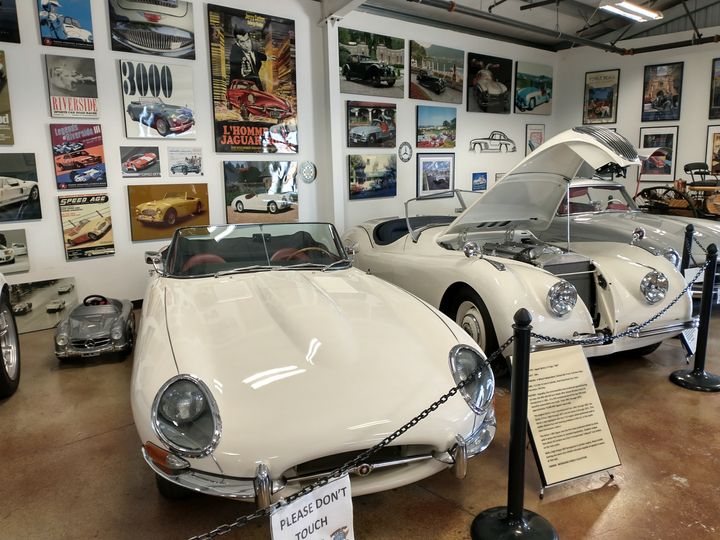
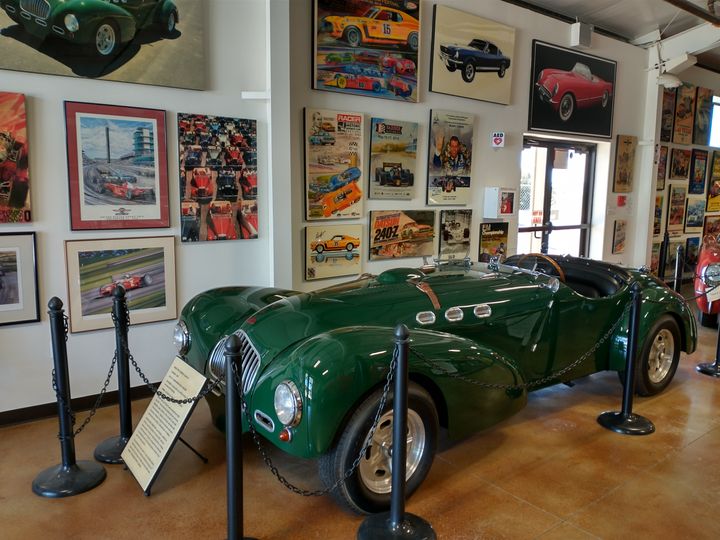
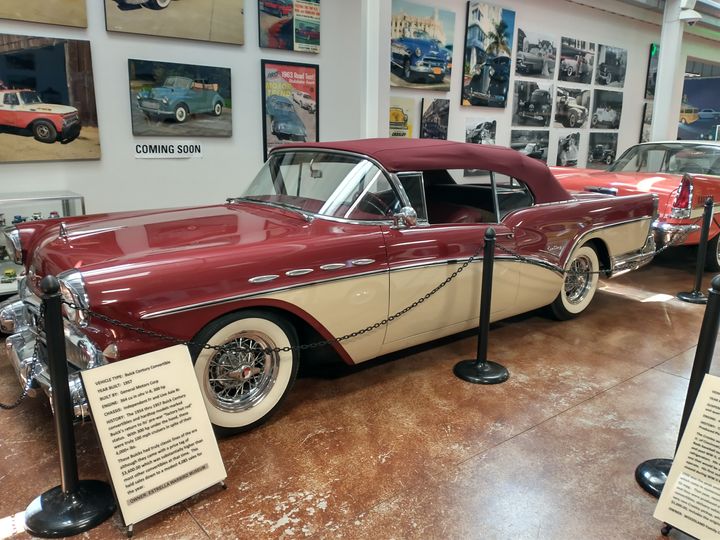
Loved the comparison between US and UK car sizes!
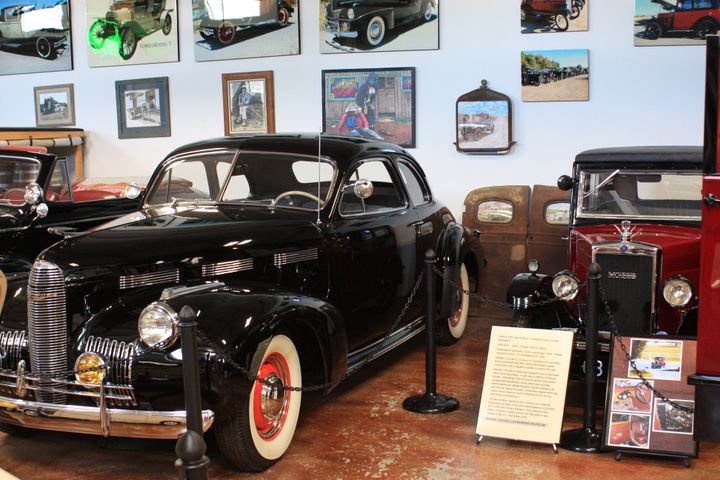
Come May and it was time to add another 12 months Road Fund Licence. Due to some poor planning on my part, I had placed the vehicle on SORN for a couple of months pending the new alternator install and MOT, so unfortunately the DVLA had increased the cost post-April even further. This year I was relieved of £325.00. I grumble every year at the state of the roads, and I can’t help but think you don’t even get a nice little tax disc to show for the expense these days.
Whilst in the garage having the alternator replaced, something must have happened to cause the fan relay to fail, as I noticed both the high and low speed fans were coming on at all times with the ignition. Not a huge problem, aside from making it sound like Jaguar had launched some jet-engined version of the XK. New “old stock” fan relay purchased for £13.45 on eBay of all places. Supposedly an easy replacement, and it probably is if you happen to be double jointed and have both long and very slender arms.
Roll on the summer months and it was time again to head to the south of France, this time to the family home where I could undertake some work, namely resolving the surface rust issue on the front suspension that had been flagged on the last few MOTs.
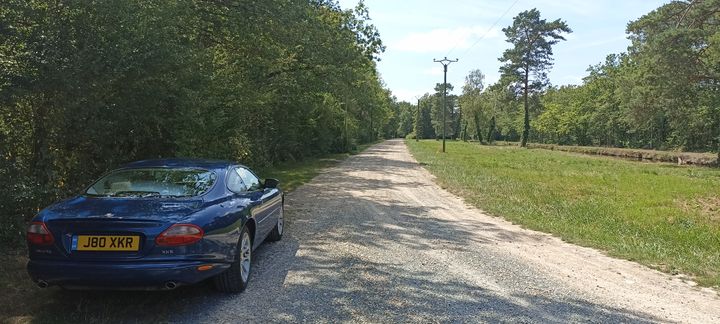
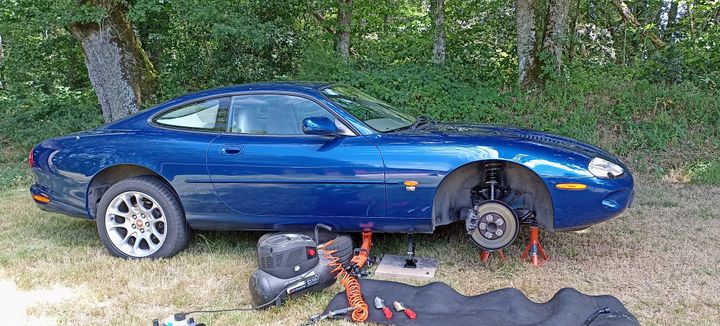
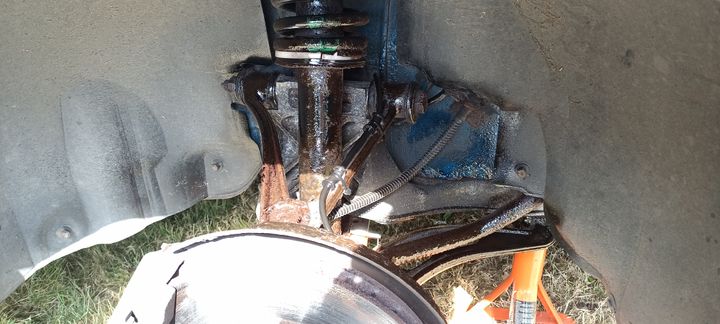
All very straightforward work. I used Dinitrol products and hugely over ordered compared to what was needed for the job, but still, this gives me a stock of rust product which is always going to be needed with an old Jaguar! Total spend £114.07. Oil and filters done too, at a cost of £57.98. After some advice from Opie Oils, I settled on Millers oil.
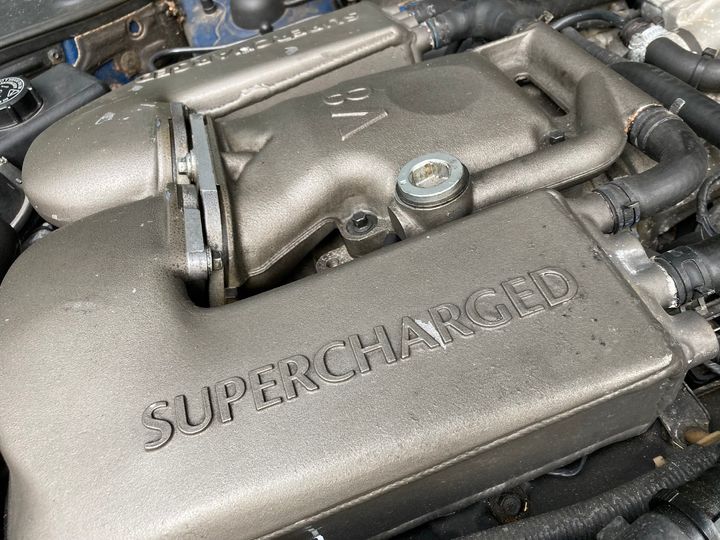
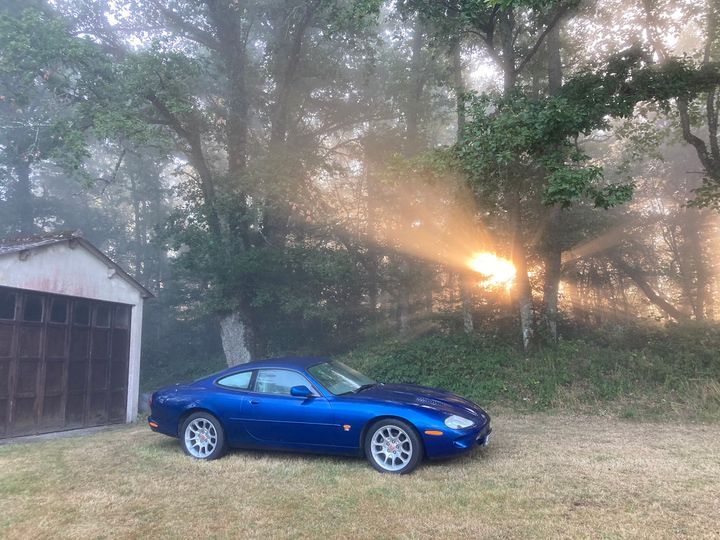
Total miles in the year: 1,677 at a cost of £403.35 in fuel.
Total cost of ownership for the year, excluding purchase, £0.95 per mile. A bit of a bargain year!
A somewhat quiet start to the year, as the Jaguar’s alternator regulator had failed at the end of November. This had the result of sending quite spiky voltage throughout the car and I was advised not to run the car at all, as I would run the very high risk of damaging the vehicle's electronics. Given these cars are known to be quite sensitive to voltage, I took the advice very seriously! So, once again, the XKR was laid up over the winter period pending work to be carried out in the spring.
This year I didn’t allow the insurance to lapse despite the lack of use, but I did move away from Footman James (who proposed an unsubstantiated increase in premium that was a little shocking) and instead insured the car with Peter James. It would seem Mr James has a monopoly on classic car insurance. Total premium in the year was £187.04 - a reduction on the last year and broadly what I paid two years previously. Getting old(er) has its benefits, I suppose. The provided European breakdown cover coming in yet again at £75.00 for an annual policy.
Not wanting to drive the car any distance with a failed alternator, I booked the car into my local mechanic. It’s the sort of non-specialist place that caters for all old and new, but I knew a few neighbours who used them for work on cars far more valuable and exotic than the XKR, and at only 2 miles from home it was no problem to drive there with the alternator disconnected via the fuse. I had, over the Christmas period, searched high and low for a Denso alternator - the recommended brand - and managed to find a new one for sale for £167.17 from a Jaguar parts distributor online. Other prices ranged wildly with the highest quote that received nearly £1,000! It certainly pays to shop around.
Total cost to fit the alternator was £365.10 making the job £532.37 in total.
A new MOT was acquired (£47.00) and this time the only advisories related to the corroded suspension components. A job for the summer.
Even whilst on holiday, I couldn’t help but to stop and look at some (much nicer) Jaguars that were on show. These were in a small display I unexpectedly came across when visiting a WWII aviation museum in California. I had an excellent chat with the curator who showed me the cars in quite some detail and certainly knew his stuff about Jaag-waars. Some other interesting cars on display too.
Loved the comparison between US and UK car sizes!
Come May and it was time to add another 12 months Road Fund Licence. Due to some poor planning on my part, I had placed the vehicle on SORN for a couple of months pending the new alternator install and MOT, so unfortunately the DVLA had increased the cost post-April even further. This year I was relieved of £325.00. I grumble every year at the state of the roads, and I can’t help but think you don’t even get a nice little tax disc to show for the expense these days.
Whilst in the garage having the alternator replaced, something must have happened to cause the fan relay to fail, as I noticed both the high and low speed fans were coming on at all times with the ignition. Not a huge problem, aside from making it sound like Jaguar had launched some jet-engined version of the XK. New “old stock” fan relay purchased for £13.45 on eBay of all places. Supposedly an easy replacement, and it probably is if you happen to be double jointed and have both long and very slender arms.
Roll on the summer months and it was time again to head to the south of France, this time to the family home where I could undertake some work, namely resolving the surface rust issue on the front suspension that had been flagged on the last few MOTs.
All very straightforward work. I used Dinitrol products and hugely over ordered compared to what was needed for the job, but still, this gives me a stock of rust product which is always going to be needed with an old Jaguar! Total spend £114.07. Oil and filters done too, at a cost of £57.98. After some advice from Opie Oils, I settled on Millers oil.
Total miles in the year: 1,677 at a cost of £403.35 in fuel.
Total cost of ownership for the year, excluding purchase, £0.95 per mile. A bit of a bargain year!
Great thread for a great car! I’m 3 years into a similar journey; I had a totally beaten up XKR left to me. The thread is called XKR to Tokyo if it is still on here. I didn’t want to scrap it so took the plunge and had it fixed up. Many happy family adventures later I’m now thinking what my next projects for it might be - the gearbox will eventually need overhauling and I started to think if an manual conversion a la XKR-R could be fun!
Gassing Station | Readers' Cars | Top of Page | What's New | My Stuff



